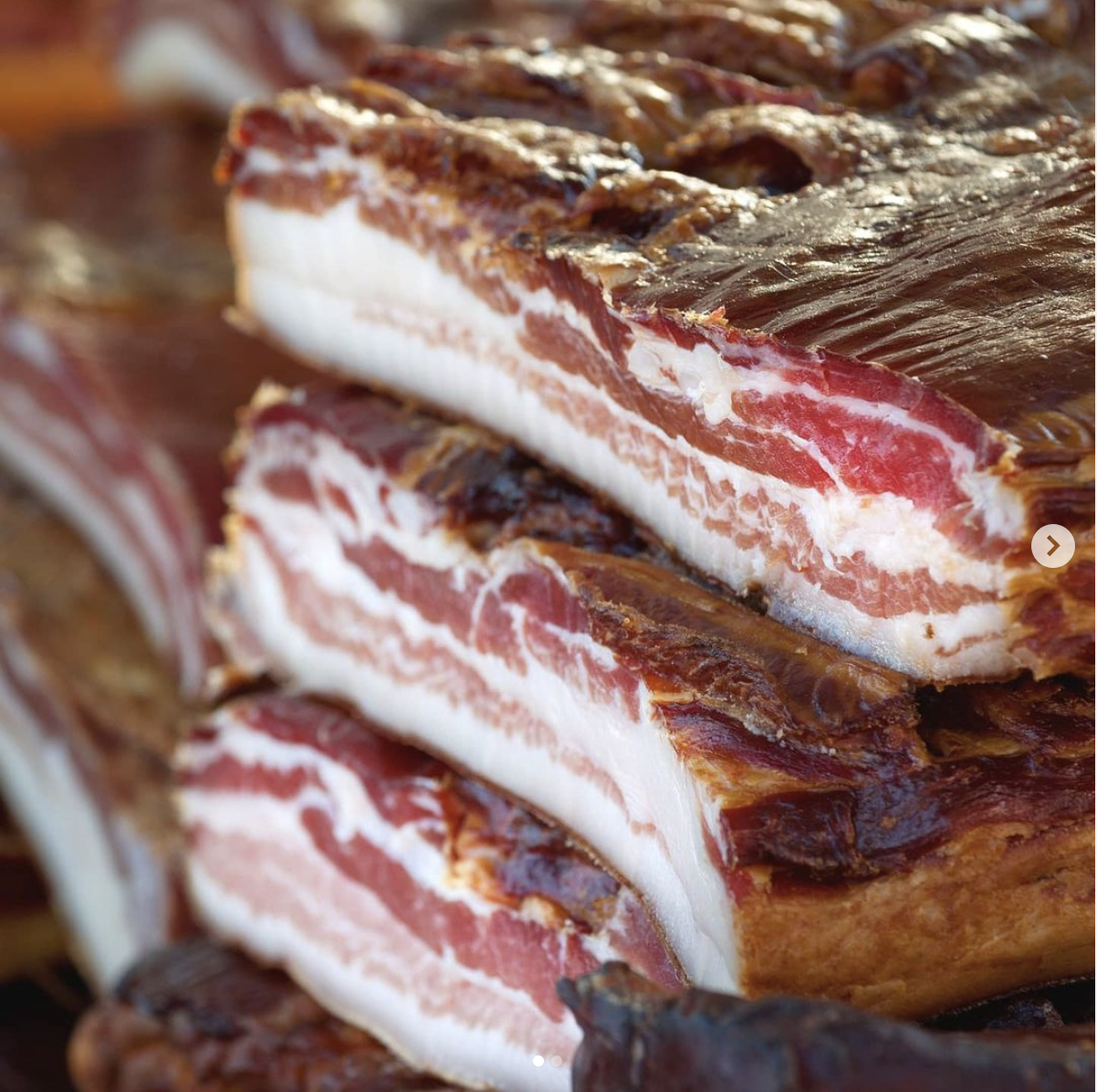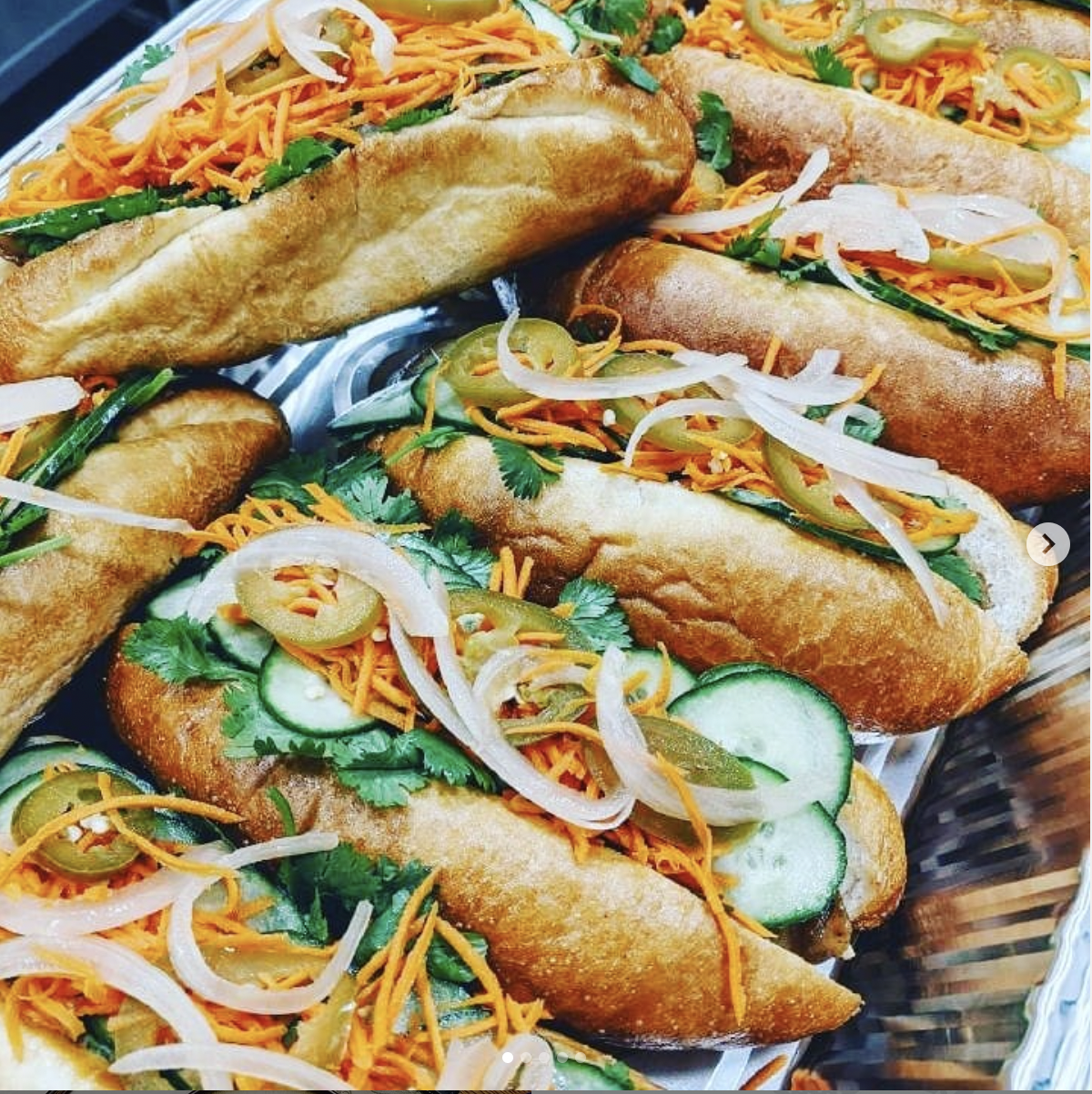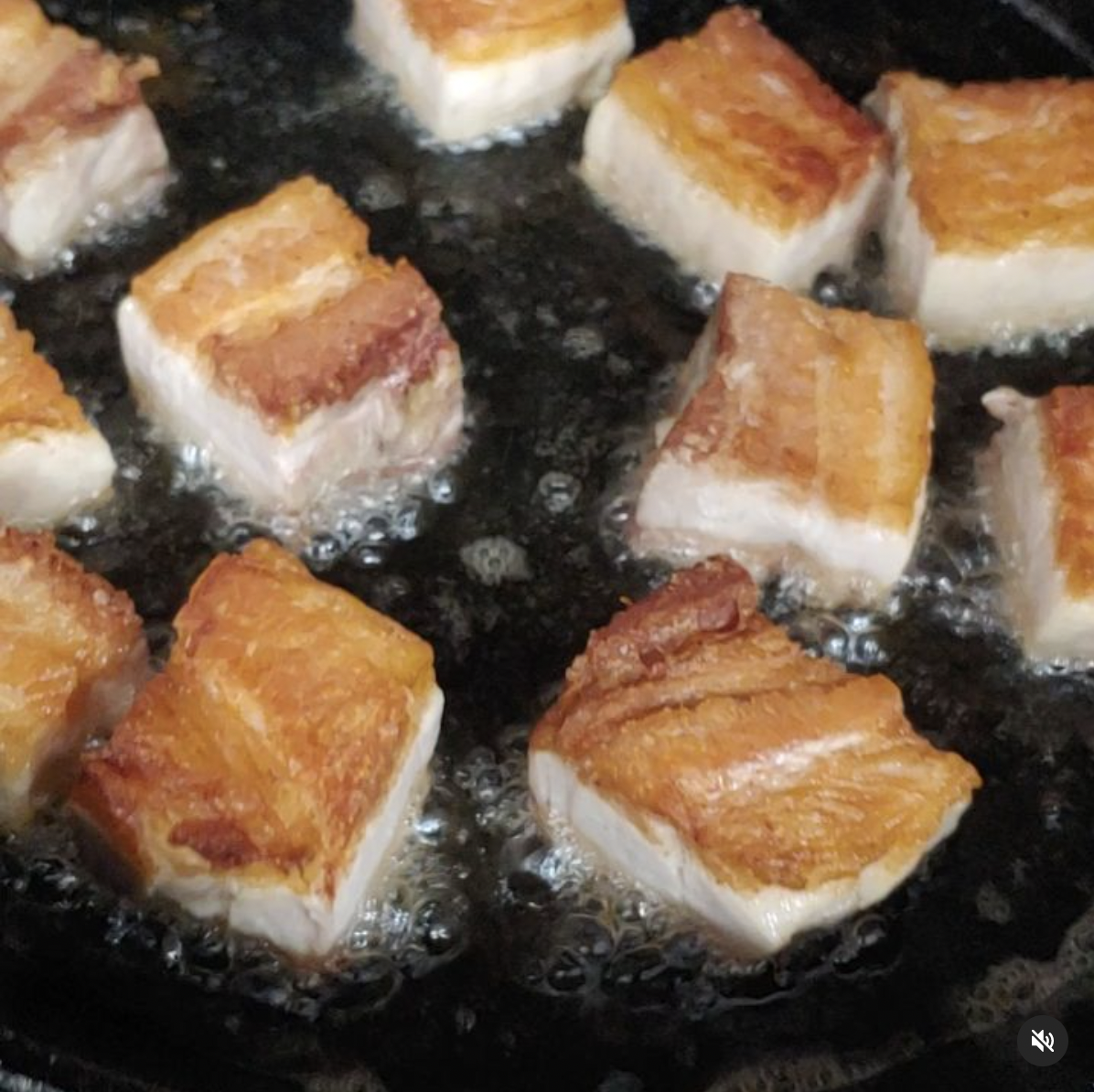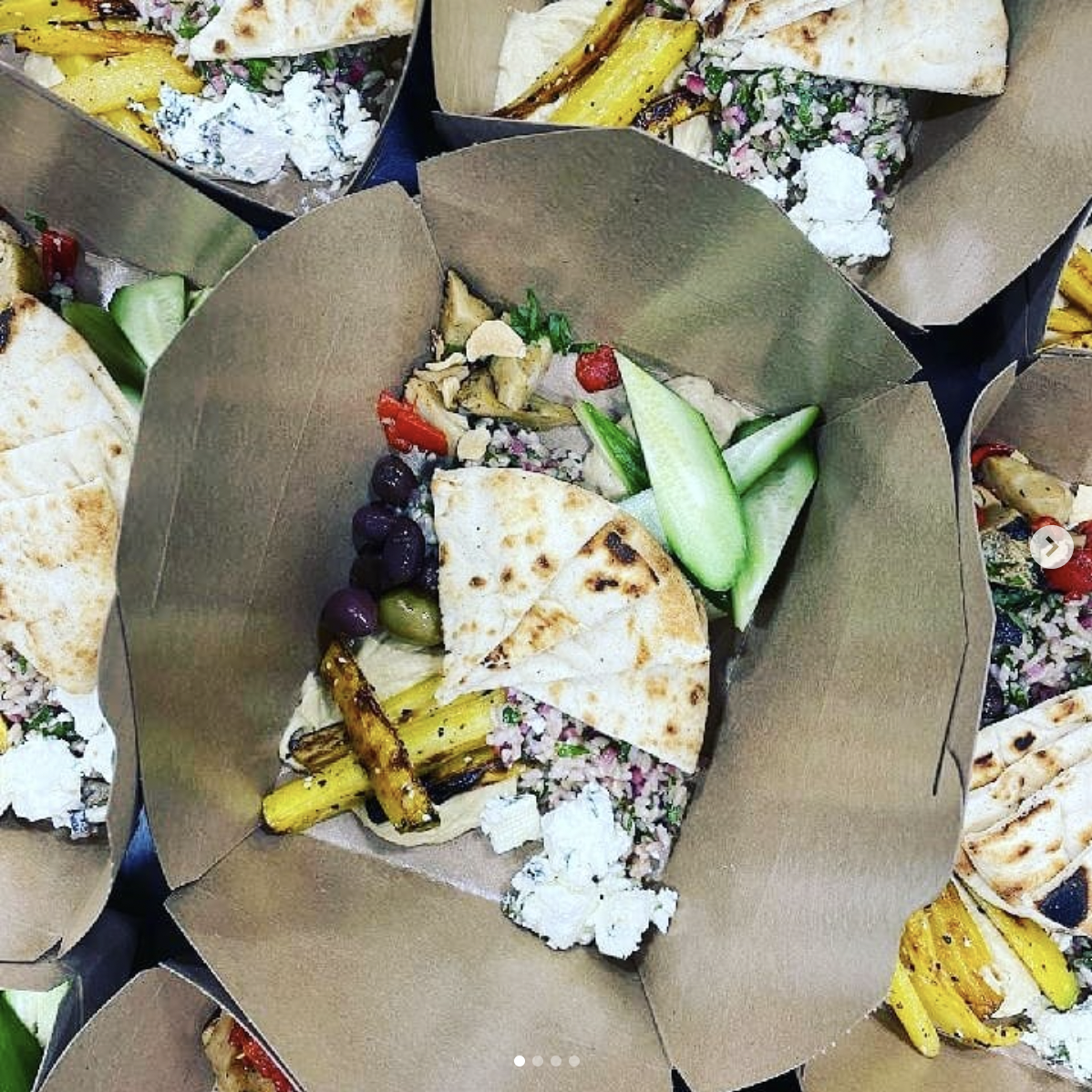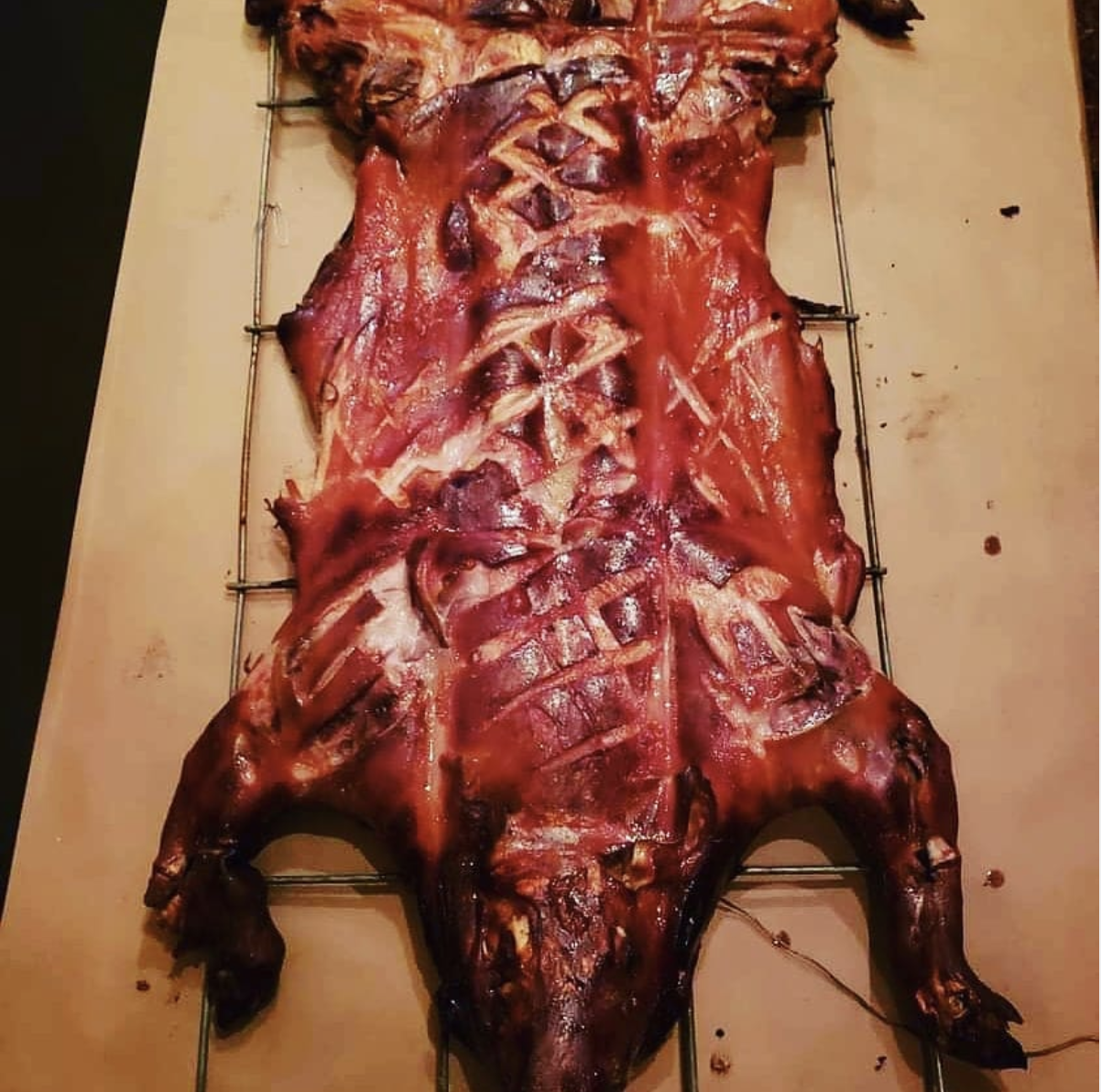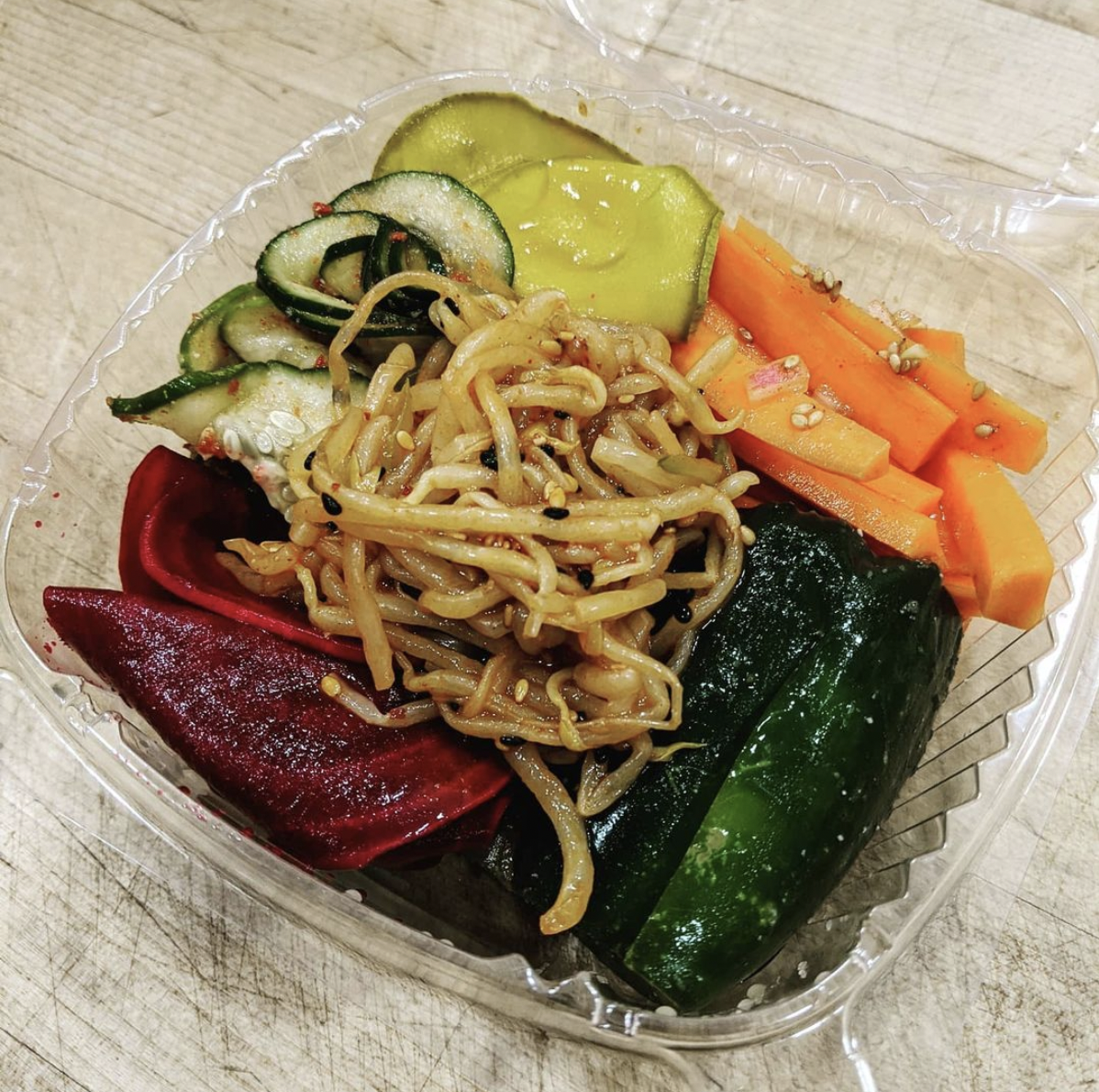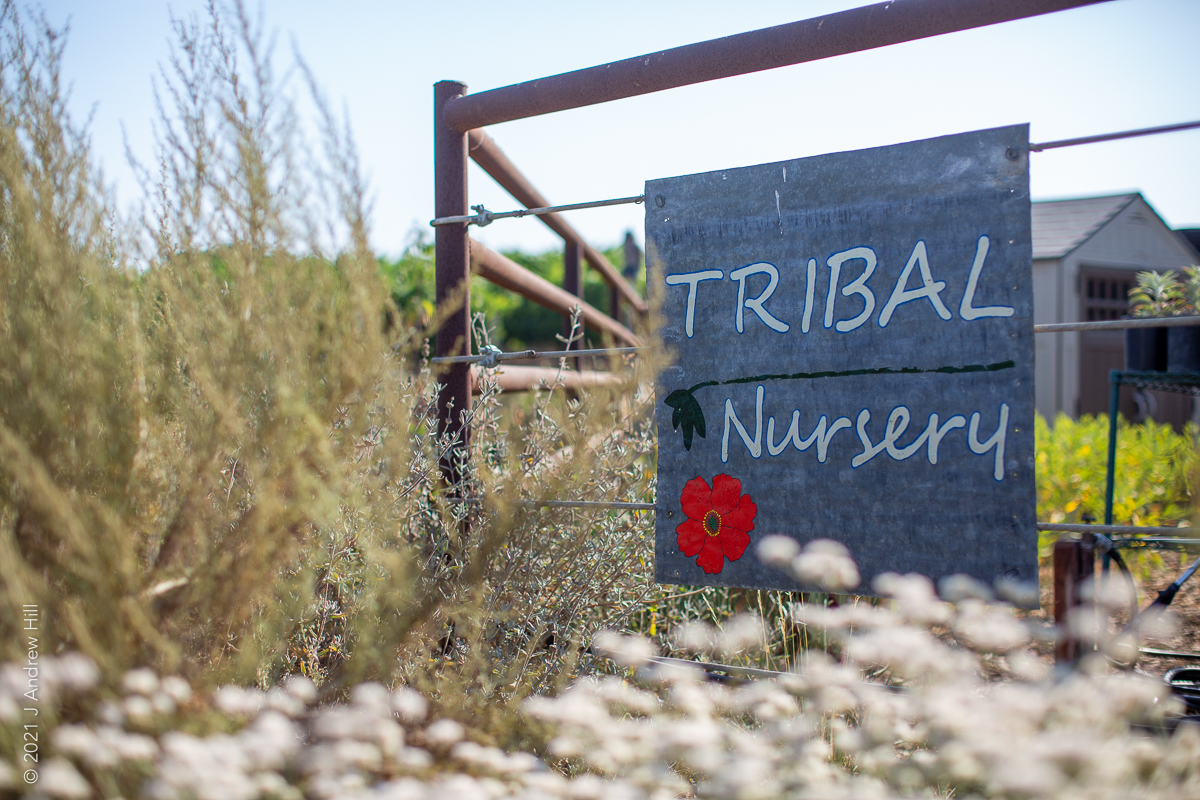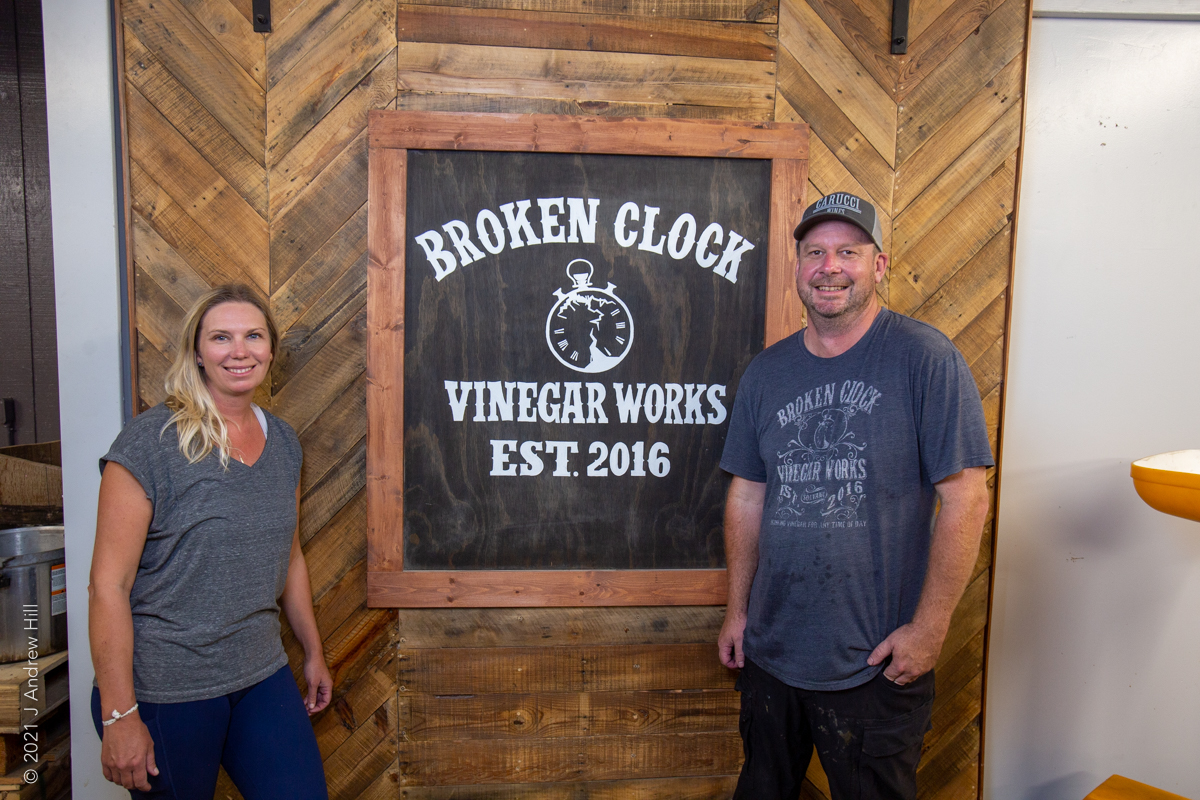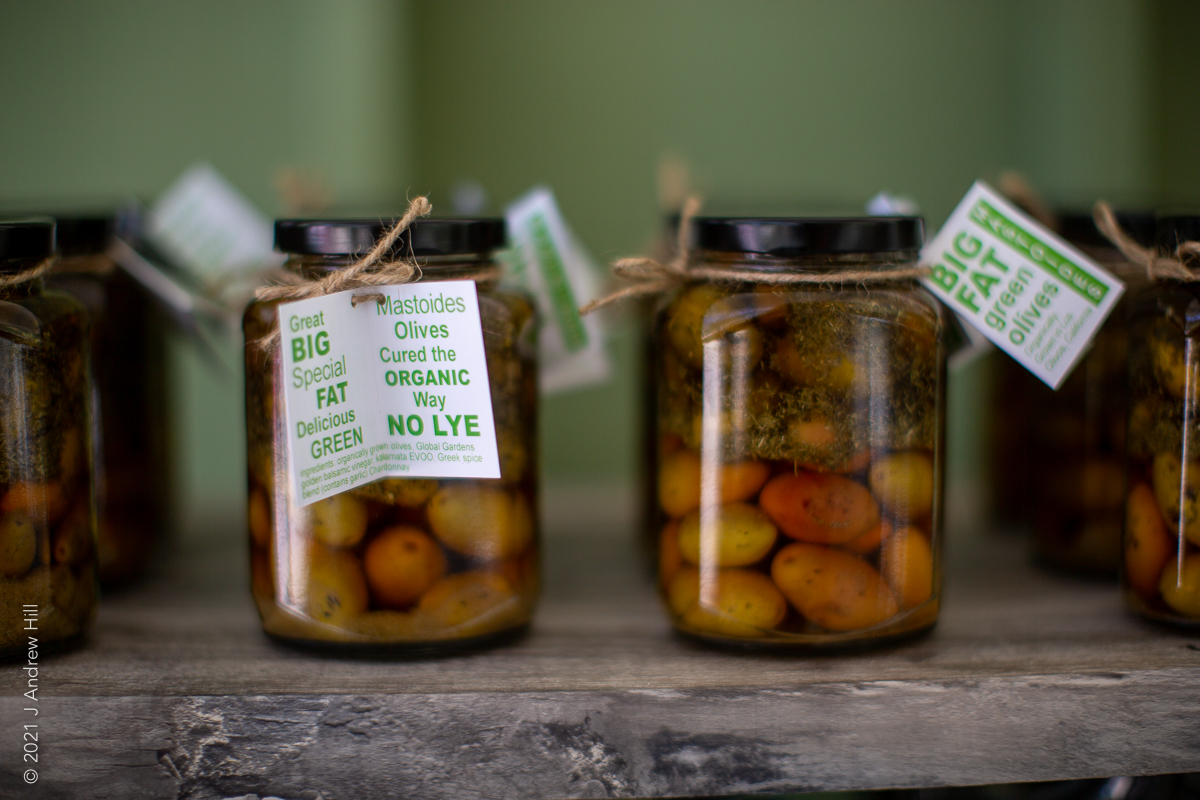Based in Buellton, High on the Hog Catering specializes in creating local, seasonal menus for any occasion. Owner/Chef Brett Stephen sources ingredients from the Santa Ynez and Lompoc Valleys because he aims to provide his clients with the highest quality food for their special event – and ensure the sustainability of our local food system. When meeting with a new client, Brett makes sure that they know what is available from the local foodshedFoodshed: geographic region that produces the food for a particular population. It describes the area spanning from where food is produced to where it is consumed—including the land it grows on, the route it travels, the markets it passes through, and the tables it ends up on. A foodshed also includes the natural resources needed for its long-term sustainability, such as water, soil and climate., and prioritizes building seasonal menus for them to choose from.
A Santa Ynez Valley native, Brett has been working in the culinary industry since he was 15 years of age. His passion for food started with his grandparents, who were avid gardeners and home cooks, often canningCanning: A method of preserving food in which the food contents are processed and sealed in an airtight container. Canning provides a shelf life that typically ranges from one to five years, although under specific circumstances, it can be much longer. and picklingPickling: The process of preserving or extending the shelf life of food by either anaerobic fermentation in brine or immersion in vinegar. This food preservation method gives the food a salty or sour taste. whatever they could to preserve the harvest. Because his childhood was steeped in these experiences, food preservationFood Preservation: Food by its nature begins to spoil the moment it is harvested. Food preservation is a means of saving food and making it last longer. This includes: freezing, drying, canning, pickling, jamming, fermenting, or smoking foods. unsurprisingly became a cornerstone of his catering business.
In the catering and events industry, you have to plan menus based on a guest list that may change – up until the last minute. Therefore, it is commonplace to order more raw ingredients than might be needed to ensure that you have enough, whatever the guest count may be. Food preservation offers an avenue for excess fresh ingredients that might otherwise find their way to the compost pile or landfill.
Brett makes various types of lacto-fermentedLacto-Fermentation: Lacto-fermentation is a specific type of fermentation that uses lactic-acid-producing bacteria to preserve foods. kimchi and sauerkraut to accent dishes and build savory flavor, also known as “umami.” He frequently uses excess produce to make soups, which he freezes and sells via his online store. His house curedCuring: Any of various food preservation and flavoring processes of foods such as meat, fish and vegetables, by the addition of salt, with the aim of drawing moisture out of the food by the process of osmosis. and smokedSmoking: Smoking is one of the oldest methods of preserving foods. Smoking is a method of drying that also imparts flavor to the food (usually meat items), and smoke helps keep bacteria-carrying-insects away during the drying process. bacon are available through a monthly signup – and he’s started making hot sauces with the abundance of peppers he purchases at farmers market over the summer.
Learn more about High on the Hog Catering and visit their online pantry to purchase a selection of their preserved products.
